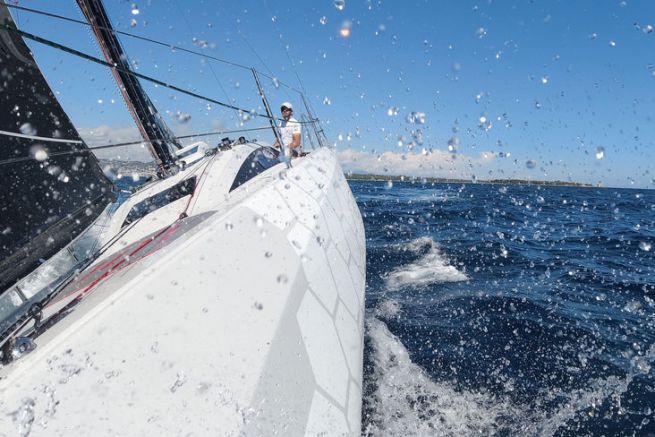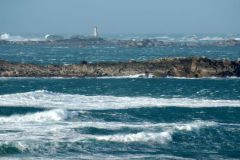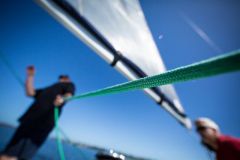A strong wind can make sailing tricky, but with a bit of technique you will be better at racing and more comfortable cruising. Here are a few tips on how to gain speed, balance the sails, stabilize the heel and get through those damn waves.
Objective speed
Whatever the wind conditions, to be effective upwind, you have to go fast before you want to set a course. This is especially true in the breeze. By trimming the sails as for the medium wind, the yacht will lie irrepressibly under the power of the wind. Moreover, each time the boat passes, the waves keep slowing the boat down. So, how do you go fast upwind in the brise??
You obviously have to rig the canvas of time, starting with a small headsail. Both sails must be as flat as possible (backstay, trim, halyard, etc., everything must be taut). The subtlety of trimming in the breeze is not to tuck the sails in as hard as in normal wind conditions. You have to start upwind with the sails relatively shocked to launch the boat, then tuck them in gradually. When it becomes difficult to steer with a constant heel and speed, it's time to shock slightly.
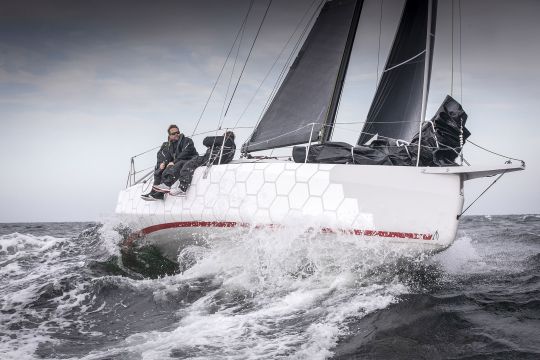
Balancing the sails
Both sails must unfurl evenly and simultaneously. A common mistake is to have the jib overhung and rely on the mainsail to do all the regulation work. The trimmer of the headsail must observe how the jib affects the mainsail. If the mainsail is completely in the wind, the jib settings must be changed. Moving the sheave of the genoa traveller backwards (or up and outwards if you have a 3D system) will twist the top of the jib and flatten the edge. The top of the sail faseye before the bottom, don't worry, it's normal
If the sails are not unfurled simultaneously, ease the jib sheet a few centimetres. This allows the aft half of the mainsail or at least the bottom battens to be left running in the worst of the wind. It is absolutely necessary to avoid the continuous slamming of the mainsail, which increases drift and drag.
In stronger winds, it is necessary to open the jib and the mainsail simultaneously. The trimmer must have as references the lodging and the pennons. If the helmsman has to move into the wind bed too often to limit the heel, then the sails should be slightly shocked. Quickly releasing a few centimetres of jib sheet will make a huge difference, the ideal being to be able to adjust the jib to windward
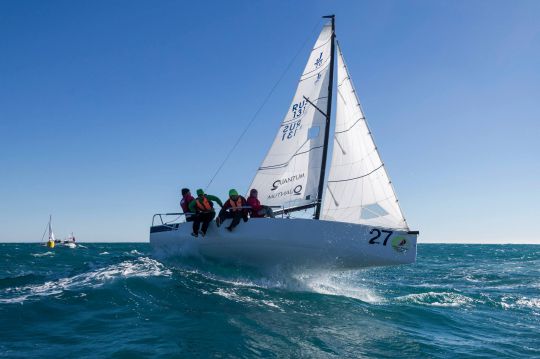
The constant lodging is the most important thing
For the helmsman and trimmer, the objective is to maintain a stable angle of heel. There is no need to focus on the pennons, as it is an overpowered navigation. Instead of resisting the helm, in the reefs, the helmsman lets the boat ride up into the wind bed accompanied by the trimmers who may shock the sails
Too many lodgings and you'll have too much pressure on the bar. Too flat and you won't be able to go fast enough to get over the waves. Monohulls are very sensitive to changes in heel angle. If you're looking to speed up, cut down moderately to get some extra room. Be patient, the acceleration takes a little time and if it doesn't happen then, ease the sails slightly and start again.
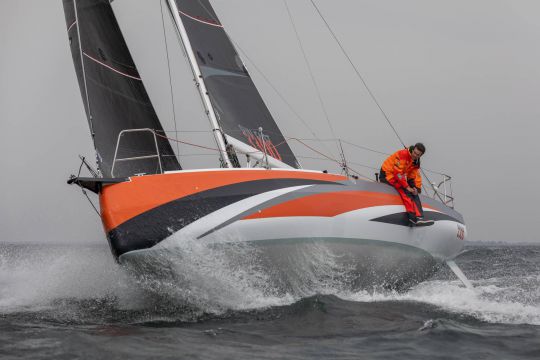
Passing the waves
It is often taught that in order to get over the waves, you have to luff up on the ridge and crash into the trough. This technique is perfect for ocean swell sailing (or dinghy sailing).
However, most of us sail in the breeze against short, steep waves.
To pass them, speed and a bit of shelter are our best allies. But just a bit of bed and breakfast, it's not about putting bateau? down! When approaching a large wave, lower the sails slightly, open the sails to keep the heel under control and attack the wave with conviction. If you have an average speed of 6.1 knots, try to reach 6.6 knots for example. Avoid going over a wave with the boat too flat, which can happen when trying to luff on the ridge. This will cause the sailboat to hit hard and slow down
The fact is that you're going to hit some waves, because there's little chance of being able to go around them all. So attack the waves with more speed and a bit of heel, then trim the sails to luff and sail flatter on the less chaotic areas.

 /
/ 